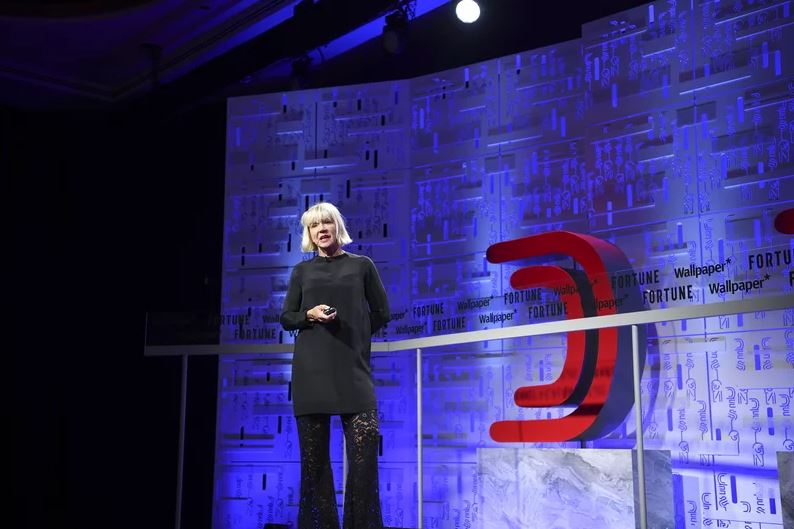Sissel Tolaas, researcher and artist for the SMELL Re_searchLab in Berlin, speaking at the 2019 Fortune Brainstorm Design conference in Singapore.
Smell is an often a neglected sense that designers rarely even consider. But it’s far more important than many people think, according to Sissel Tolaas, who has spent decades “literally exploring the world as a dog.”
The researcher and artist told the audience at Fortune’s Brainstorm Design conference in Singapore this month that smell actually has a fairly narrow biological purpose.
“The purpose of the nose is to find food and a partner,” she said. “Don’t forget that the next time you put perfume on your skin.”
Smell is closely linked to memory and emotions. Tolaas made use of this biological quirk at the conference by distributing postcards with a unique odor to help the audience members remember the event.
Even so, she said, smell is a forgotten, neglected sense. People underestimate the impact of particles that the human nose can detect.
“We live in multiple realities,” she said. “The invisible reality [of smell]—the real reality—seems to be forgotten. These particles are providing information beyond any other type of information.”
Tolaas has held a number of interactive exhibitions at galleries around the world, often aimed at encouraging people to look past appearances and consider how smell colors their perceptions of others.
“Rather than just looking at a person, the smell is providing information that trigger your emotion in the quickest time of any type of senses,” she said.
She also worked with a biotech company Gingko Biolabs to help replicate the scent of extinct plants using a blueprint made with genetic sequencing. “In total, we have three plants,” she said. “Two of them are on display.”
Not everything Tolaas does is an art project; she hopes her work will have practical applications, too. For example, Tolaas designed a bracelet designed to ward off sexual harassment using an odor intended to deter an attacker.
Designers tend to focus on visual elements, but smell has a fairly long history of industrial applications. Natural gas, for example, is odorless—but in 1826, scent was added so that people could detect potentially dangerous leaks.
Tolaas hopes her work will also have many uses beyond art.
“So not only am I simulating and replicating reality for various purposes,” she said, “but I’m also looking at the chemical compounds of smell molecules for functional purposes.”
For more coverage of Fortune’s Brainstorm Design conference, click here.
Source: Sniff Test: Are Designers Neglecting Smell? | Fortune













